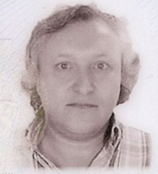Selected Papers from the Workshop on Intelligent Systems and Applications in Healthcare (ISA’Health 2016)
A special issue of Information (ISSN 2078-2489).
Deadline for manuscript submissions: closed (31 October 2016) | Viewed by 10441
Special Issue Editors
Interests: knowledge engineering; health informatics
Special Issues, Collections and Topics in MDPI journals
Interests: electronic health records; interoperability; databases; applied artificial intelligence
Interests: intelligent decision support systems; artificial intelligence; business intelligence; data mining; intelligent data systems
2. IOTECH—Innovation on Technology, 4785-588 Trofa, Portugal
Interests: knowledge discovery; data science; progressive web apps; research and development
Special Issues, Collections and Topics in MDPI journals
Special Issue Information
Dear Colleagues,
The main business goal in healthcare is to increase the quality of services in healthcare while reducing costs. This objective contributes to improving the quality of life of patients, and, in some cases, reducing mortality and morbidity. To achieve this goal, the use of intelligent systems in the decision process becomes essential. The Workshop on Intelligent Systems and Applications in Healthcare (ISA’Health 2016) is focused on demonstrating how to take advantages of using Computer Intelligence, ensuring interoperability and security, overcoming local and temporal barriers in order to support the needs of society, and the development of innovative systems and applications to support healthcare decision support (http://idsist.wix.com/isahealth).
This workshop will bring together researchers who are working in the area of Intelligent System and Business Informatics. The cross-domain integration and appraisal of different fields, related to Intelligent Systems and Applications, provides an atmosphere to foster a variety of perspectives and opinions.
The main goal of this Special Issue is to extend the best workshop papers, presenting innovative and exciting works and promoting a discussion about how Intelligent Systems can contribute to improve the quality of the decision process in healthcare.
Prof. José Machado
Prof. António Abelha
Prof. Manuel Filipe Santos
Prof. Carlos Filipe Portela
Guest Editors
Manuscript Submission Information
Manuscripts should be submitted online at www.mdpi.com by registering and logging in to this website. Once you are registered, click here to go to the submission form. Manuscripts can be submitted until the deadline. All submissions that pass pre-check are peer-reviewed. Accepted papers will be published continuously in the journal (as soon as accepted) and will be listed together on the special issue website. Research articles, review articles as well as short communications are invited. For planned papers, a title and short abstract (about 100 words) can be sent to the Editorial Office for announcement on this website.
Submitted manuscripts should not have been published previously, nor be under consideration for publication elsewhere (except conference proceedings papers). All manuscripts are thoroughly refereed through a single-blind peer-review process. A guide for authors and other relevant information for submission of manuscripts is available on the Instructions for Authors page. Information is an international peer-reviewed open access monthly journal published by MDPI.
Please visit the Instructions for Authors page before submitting a manuscript. The Article Processing Charge (APC) for publication in this open access journal is 1600 CHF (Swiss Francs). Submitted papers should be well formatted and use good English. Authors may use MDPI's English editing service prior to publication or during author revisions.
Keywords
- Intelligent Systems
- Biomedical Engineering
- Data Engineering
- Applications
- Artificial Intelligence
- Information Systems
- Intelligent Decision Support
- Health Care








